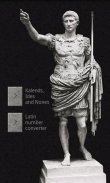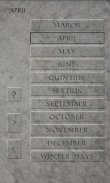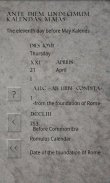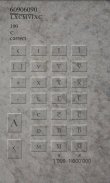






Kalends, Ides and Nones

Descrição do Kalends, Ides and Nones
The ancient Romans called the days of the month, referring to the Kalends, Ides and Nones, and that is what this application does: by entering a date, shows his wording in Latin (one of several). For ancient dates it shows some information about the organizing of the pertinent calendar. The application considers the Gregorian and Julian calendars and a reconstruction of Numa and Romulus (or Roman) calendars.
There is also a converter that uses the latin numbers subtractive principle (4 = IV) and, for numbers beyond 3999, the convention: a line above = per one thousand, two lines above = per one million. They can be inserted Arabic or Latin digits.</div> <div jsname="WJz9Hc" style="display:none">Os antigos romanos chamavam os dias do mês, referindo-se ao calendas, Ides e nonas, e é isso que esta aplicação faz: inserindo uma data, mostra sua redação em latim (um dos vários). Para datas antigas ele mostra algumas informações sobre a organização do calendário pertinente. O aplicativo considera os calendários gregoriano e Julian e uma reconstrução de Numa e Romulus (ou Romano) calendários.
Há também um conversor que utiliza o princípio números latino subtractiva (4 = IV) e, para além do número 3999, a convenção: uma linha acima = por mil, duas linhas acima = por milhão. Eles podem ser inseridos em árabe ou latino-dígitos.</div> <div class="show-more-end">

























